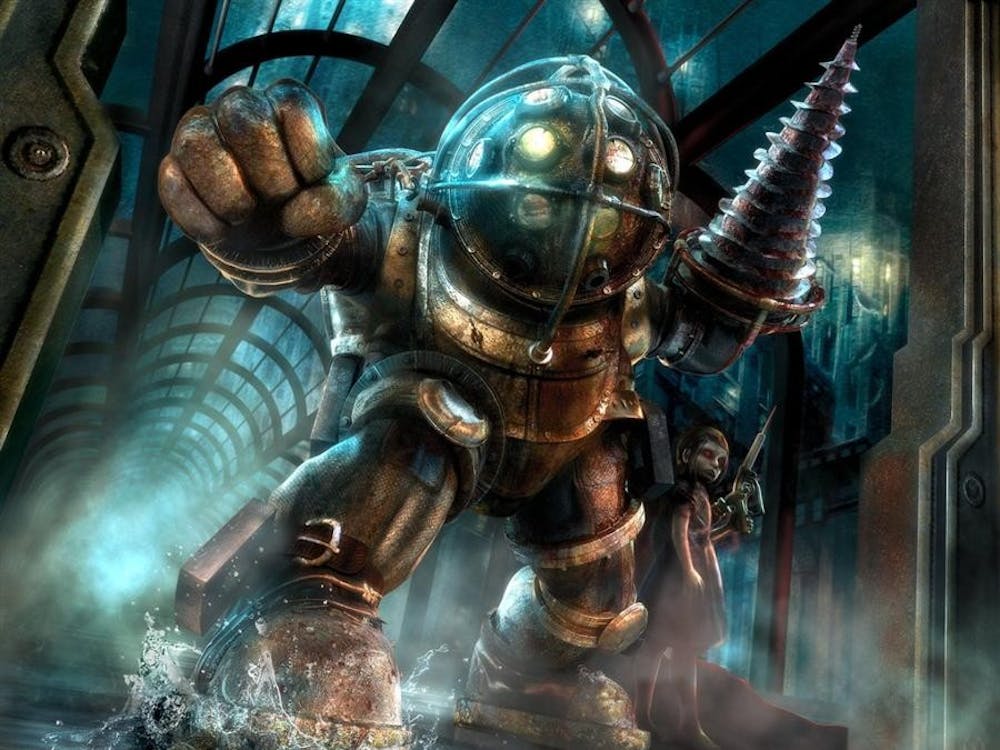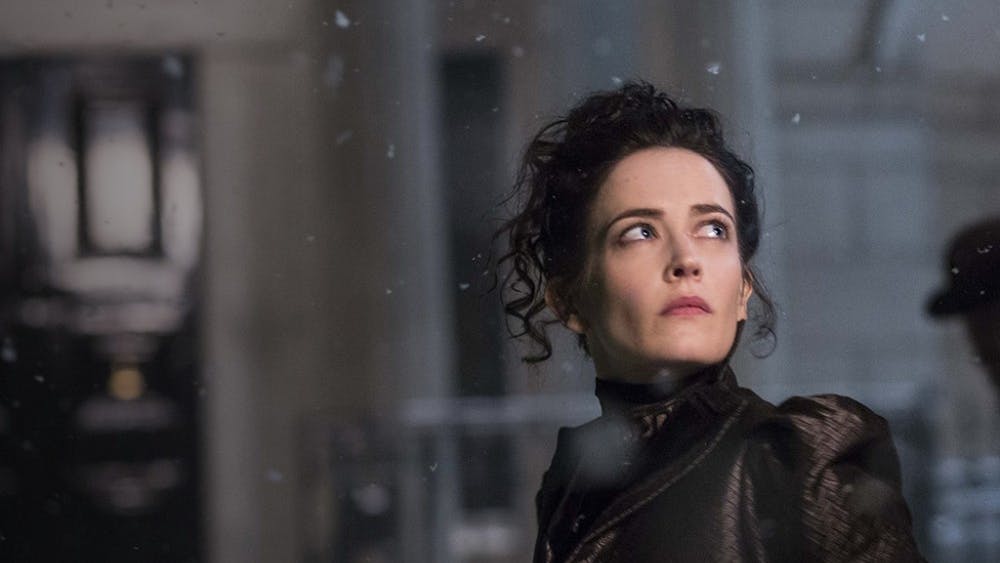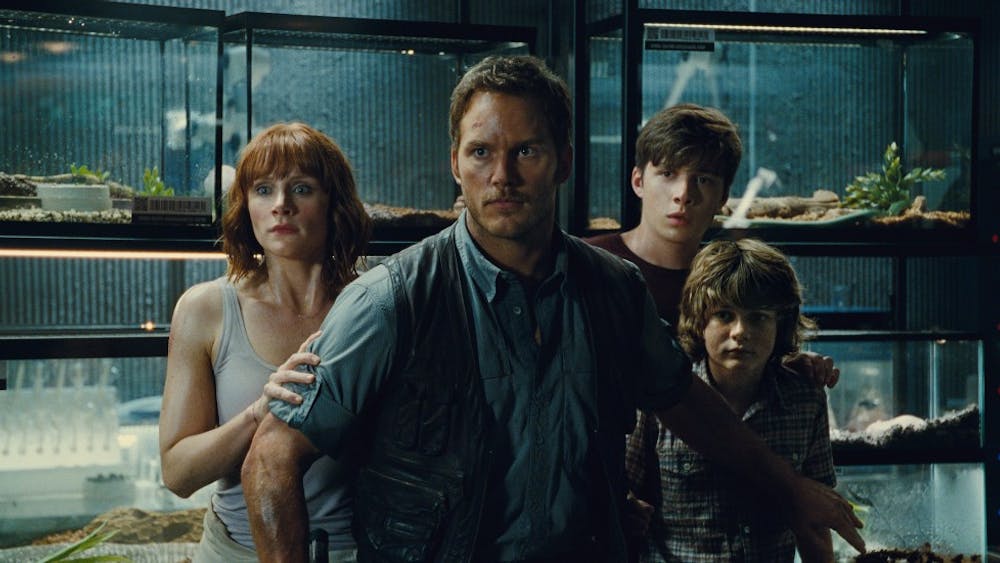With so many different types of games gaining popularity this decade, it was difficult to create a comprehensive list. So, we didn’t. Instead, two WEEKEND gamers Chad Quandt and John Barnett give you their thoughts on the decade in games.
Chad Quandt:
This was the decade of the shooter. If you’re a fan of other genres, blame some of the games on this list. Their breakthrough success must have made every game publisher demand they get in on the FPS-bandwagon. While shooters benefited from the instantaneous feedback players received, a few landmark games stood above for reinventing their genres, creating new ones, and changing how we look at the medium.
“Portal” (2007) – The best five hours you can spend. “Portal” is the videogame equivalent of an overnight success story: pitched by Digipen students, nurtured by Valve, packaged inside the spectacular Orange Box and finally becoming a critically acclaimed darling. The brilliance of the central mechanic (creating portals to solve physics and logic puzzles) will always be overshadowed by the razor-sharp writing. It’s this story that gave us GLaDOS, one of the medium’s most subtle and hilariously disturbed villains. We miss you, Weighted Companion Cube.
“Shadow of the Colossus” (2005) – “SotC” asks you to defeat sixteen colossi to resurrect a loved one with nothing but a sword and a horse. Short on details and heavy on atmosphere, you can invest and interpret your actions however you wish. Are you a brave hero, scrambling around on monstrous beings like the worst kind of pest? Or are you a destroyer killing beautiful (and sometimes peaceful creatures) working for an evil deity? If you challenge games as a viable art form, pick up this cult classic.
“Grand Theft Auto: Vice City” (2001) – “GTA III” came out a year before, but it wasn’t until the game went to 1980s Miami that it nailed it. Mainstream news covered its controversial material, but this re-imagining of the series effectively established the sandbox genre as its own monster. While the player’s actions were limited towards mostly illegal activities, the series perfected a satire of the same violent culture proponents claimed it advocated.
“Bioshock” (2007) – Plot twists can make or break a story (just ask M. Night Shyamalan). “Bioshock” not only took the player’s mind and beat it like an adolescent discovering puberty, but also critiques the illusion of choice that videogames have triumphed for decades. The unsettling atmosphere, genuine terrors and analysis of objectivism is all icing on the cake.
“Half-Life 2” (2004) – Valve’s signature series has told an engaging story with endearing characters, all without their central protagonist ever uttering a single word. Every corner contains another subtle hint to the story around them. When your companion Alyx tells you that your mission affects the world, you believe it. The phenomenal Havok physics engine gives us another inventive weapon, The Gravity Gun. Why fire bullets when you can grab a nearby garden gnome and send it flying across the landscape into your enemies’ faces?
“Halo 2” (2001) – We have this series to thank for the mainstream adoption of shooters and the reason why I stood in line for “Halo 3” alongside a few frat brothers. The massive hype has prevented fair critiques of the game’s faults and strengths, but Bungie and Microsoft took solid gameplay and created the streamlined online multiplayer that eventually became home to millions of racist ten-year-olds.
“God of War” (2005) – Greek mythology is messed up by its own rights. “God of War” celebrates the incestuous and sinister legends and rips their spinal cords out. Action games have been aping its style and mechanics ever since: quicktime events, unearthly combos and a story worth placing among the legends it so dearly pays homage to. You will rip off a Minotaur’s horns, throw them into a Cyclops’ eye and celebrate your victory by seducing a water nymph. A game that perfectly depicts a usual day.
“Team Fortress 2” (2007) – Valve’s third entry on the list took over ten years to make and it shows. With an art style fitting for a Pixar movie, “TF2” is one of the most balanced and engaging shooters ever. The “TF2” team has treated their fans like spoiled children: every few months a new update comes out with official maps, weapons and unlockable items. All for free. When nickel-and-dime DLC eventually ruins the industry, we’ll look back at this as the glory days.
“Star Wars: Knights of the Old Republic” (2005) – George Lucas really should have let developer Bioware write the new trilogy as this role-playing series took an engaging look at the galaxy far, far away.
“Psychonauts” (2005) – Nintendo likes to talk at some point during every new Mario game about how revolutionary it is. Usually this consists of a new power-up suit for the Italian to wear. “Psychonauts” is what Shigeru Miyamoto should be dreaming about. Creator Tim Schafer’s summer camp for aspiring psychics has so many unique gameplay mechanics and levels, a greedy publisher could have split this baby into multiple games and probably made more of a profit. This is the best game you haven’t played. If you’re not cracking up by The Milk Man level, you don’t have a soul.
Notable Mentions:
“The Sims” (2000), “Resident Evil 4” (2005), “World of Warcraft” (2004), “Call of Duty 4: Modern Warfare” (2007), “The Elder Scrolls IV: Oblivion” (2006), “Super Smash Bros. Brawl” (2001), “Burnout 3” (2004), “Kingdom Hearts” (2002), “Timesplitters 2” (2002), “Pokemon” (1999, but god damn we felt its presence all decade), “The Legend of Zelda: Twilight Princess” (2006), “Advance Wars” (2001)
John Barnett:
As video games have elevated in stature from mindless entertainment to a true art form over the past several decades, it's always a fun (and some would argue important) to look back and acknowledge which games represented video gaming best. Several sub-genres have come to the fore as the most popular; first-person shooters, role-playing games and sports franchises among them. The best games, though, often subvert genre and appeal to multiple sensibilities and fan groups at once.
Most "best of" lists of video games tend to acknowledge games that are the most important of groundbreaking rather than the ones that are the most exciting to play and contain the heftiest narrative thread. We'll leave the historical importance to Game Informer and concentrate on games that best represented the art of video gaming over the past decade.
"BioShock" (2007) – Not just the best game of the decade but one of the best of all-time is 2K’s "BioShock," a masterpiece of world design, art direction, character-leveling, fluid controls and writing that has very few peers. Exploring the atmospheric dystopia of Rapture is a religious experience for those who can appreciate the obsessive detail that went into its creation. As your character gets closer and closer to discovering his true identity, themes of morality, power and the greater good versus the self become paramount. Play it. Now.
“Fallout 3” (2008) – It’s entirely possible to spend weeks of real-time exploring and completing quests in the haunted, post-nuclear-explosion Washington D.C. landscape of “Fallout 3”. Aside from being one of the most expansive games ever created, Bethesda’s masterwork allows for an unrivaled amount of freedom of choice in your character’s actions, making for an experience that gamers create themselves rather than allowing it to be created for them. Multiple downloadable content packs sustain the action and expand the scope.
“Braid” (2008) – The debate over whether or not video games should aspire to be art all but ended when Jonathan Blow’s “Braid” hit the Xbox Live Game Marketplace in August of 2008. Time manipulation is the key to discovering all the game’s puzzle pieces and besting your foes. As the game gets considerably harder, the story gets considerably deeper. A literate mentality and gorgeous 2D side-scrolling graphics only add depth to the proceedings.
“Shadow of the Colossus” (2005) – The premise is simple to describe, yet terribly complex to execute. Destroy 16 giant colossi to free your lover from the grip of death. As the nameless hero explores a desolate countryside on the back of his trusty steed Argo, each colossi becomes harder and harder to defeat, and the satisfaction of finally felling one of the beasts is nearly unparalleled. Add to his a haunting musical score and intuitive controls and what you have is a fantasy masterpiece.
“Grand Theft Auto IV” (2008) – Rockstar’s latest “GTA” adventure succeeds in further blurring the boundary between video games and cinema. Protagonist Niko Bellic is the most dynamic and multi-faceted video game character ever in terms of personality and motivations, and the narrative he inhabits is worthy of the best cinematic crime drama. Despite all this, the real star here is a fully-realized Liberty City detailed down to the litter in its back alleys.
“Super Mario Galaxy” (2007) – Brilliant level design and a heaping helping of Nintendo nostalgia combined on Wii to create Mario’s most expansive Princess-rescuing quest ever. Gravity be damned as Mario traverses a treacherous series of galaxies each with a kind of three-and-a-half dimensional landscape, allowing the mustachioed hero to search every nook and cranny for coins and wacky new power-ups to help him on his way.
“Resident Evil 4” (2005) – The first “Resident Evil” started the survival horror craze that’s culminated in the far inferior “Left 4 Dead” series. The best and most consistent “RE” game by far is its fourth major installment, combining the classic building terror and sudden scares of past “RE” games with a revolutionary control scheme that’s been copied in hundreds of games ever since.
“God of War” (2005) – What could have ended up as a simple hack n’ slash adventure is elevated to godlike heights by an ingenious control scheme and a story and host of set-pieces that define the term epic. As Kratos, a man out to avenge the death of his family at the hands of no less than Ares himself, you murder your way through a veritable catalog of Greek mythological figures. The 2007 sequel is just as awesome, but this game began the carnage.
“Call of Duty: Modern Warfare 2” (2009) – While the occasionally thrilling single-player campaign admittedly leaves something to be desired, the latest COD iteration’s online multiplayer is the best ever seen in a game. Hardcore FPS addicts make their way to level 70 and beyond while obsessively tracking stats and upgrading a broad range of very lethal weapons, all as they’re surrounded by some of the most photorealistic graphics and bone-jarring sound ever seen and heard.
“The Beatles: Rock Band” (2009) – No. It’s not just “Rock Band” with Beatles songs. Harmonix and Apple Corps teamed up to create the most obsessively detailed, fan-friendly music game of them all. With amazing individual animations for every single song and the ability to work on three-way vocal harmonies and perfect Ringo’s every drumbeat, this game honors the Beatles like no other piece of peripheral media out there.
“Final Fantasy X” (2001) – Square’s first offering on the PS2 is heaven for serious RPG fans. New additions to the Final Fantasy canon included full-game voice acting and an overhauled combat system that remains one of the series’ most sensible and intuitive. The story is nothing to scoff at either, as it’s the most epic and memorable since the timeless “FF7.”
“The Legend of Zelda: Twilight Princess” (2006) – Link’s first outing on the Wii shares all the same hallmarks of the previous three 3D Zelda adventures, but with some decidedly grown-up themes thrown in for good measure. As Link attempts to rescue the most fully realized Hyrule yet from being swallowed by an alien nether-realm, a most heart-wrenching story unfolds. With the possible exception of “Ocarina of Time,” “Twilight Princess” is perhaps the best, though certainly not the most important, game in the Zelda series.
“Super Smash Brothers Melee” (2001) – Quite possibly the ultimate party game, the Gamecube iteration of “Smash Bros.” first and best answered that age-old query: Who would win in a fight between Mario and Ness from Earthbound? Many other burning questions were answered as friends became enemies when controlling a host of Nintendo characters as they battled their way through many an inspired stage in basic combat or the expansive tournament mode.
“Manhunt” (2003) – One of the most controversial games ever made, and certainly Rockstar Games’ most controversial (which is a feat unto itself), “Manhunt” puts you in control of a man out for revenge on his captors by way of a continuous string of gruesome murders. It’s not all shock value, as Manhunt hinges on excellent stealth gameplay and wicked humor in the midst of the brutally in-your-face gore.
“Wii Sports” (2006) – It’s so much more than a novelty game, yet “Wii Sports” still remains both a gift and a curse. For every “Wii Sports Resort” or “Punch-Out!!” There are 20 inferior cash-in games trying in vain to achieve the success of Wii’s inaugural offering. Yeah, the baseball sort of sucks, but everything else in the game, from bowling and tennis to golf and boxing, is infinitely fun and increasingly challenging by oneself or with friends and family.
BoD: Video Games

Get stories like this in your inbox
Subscribe





